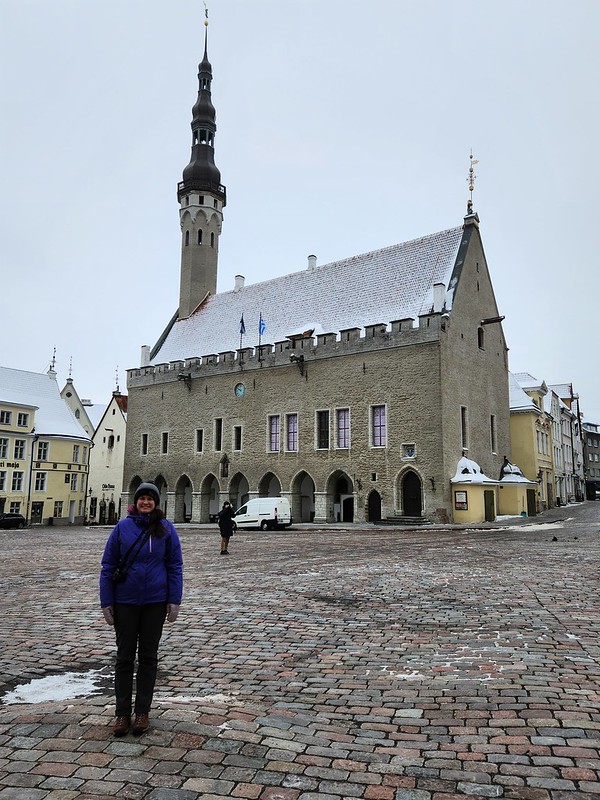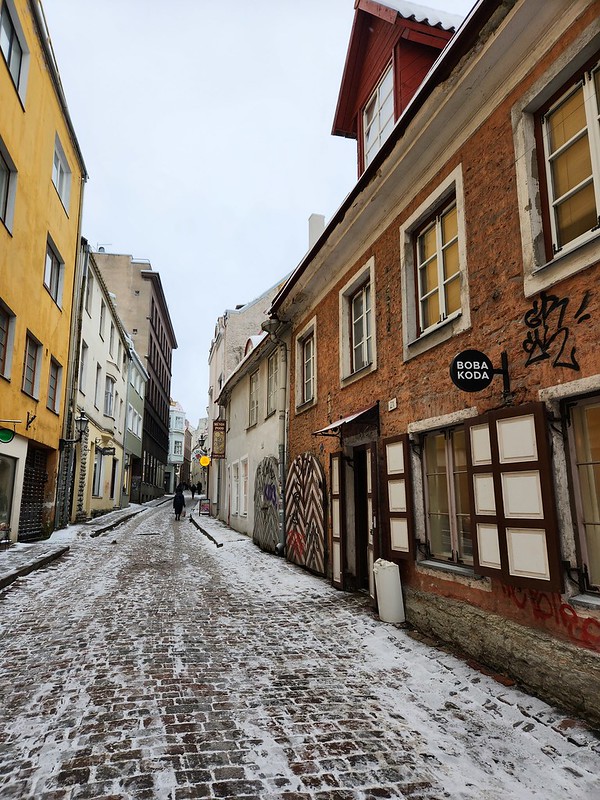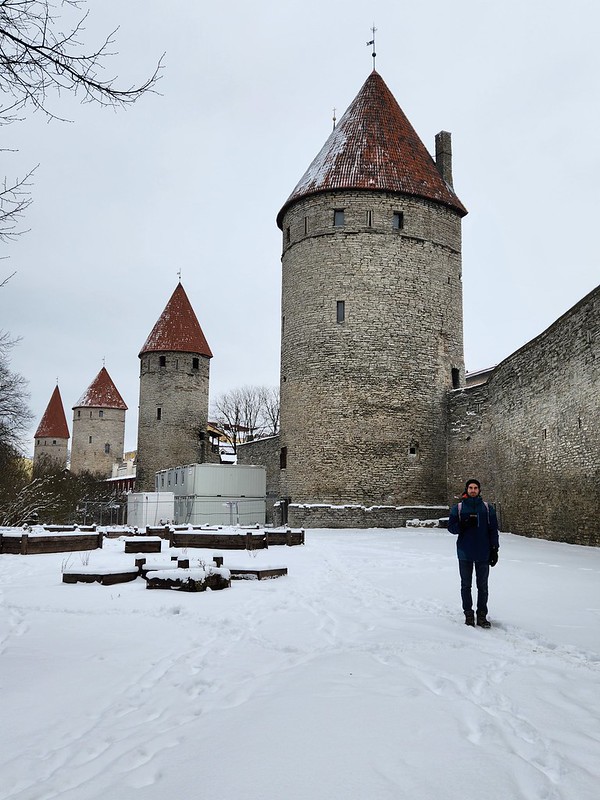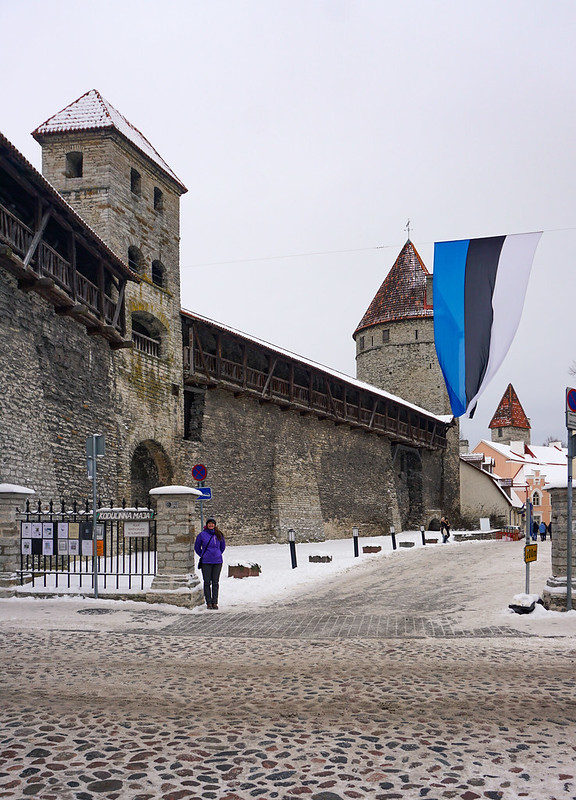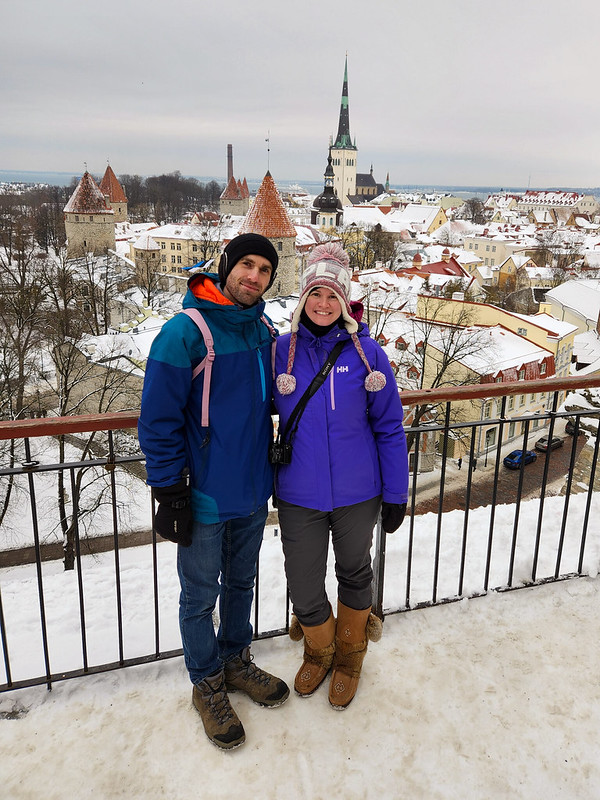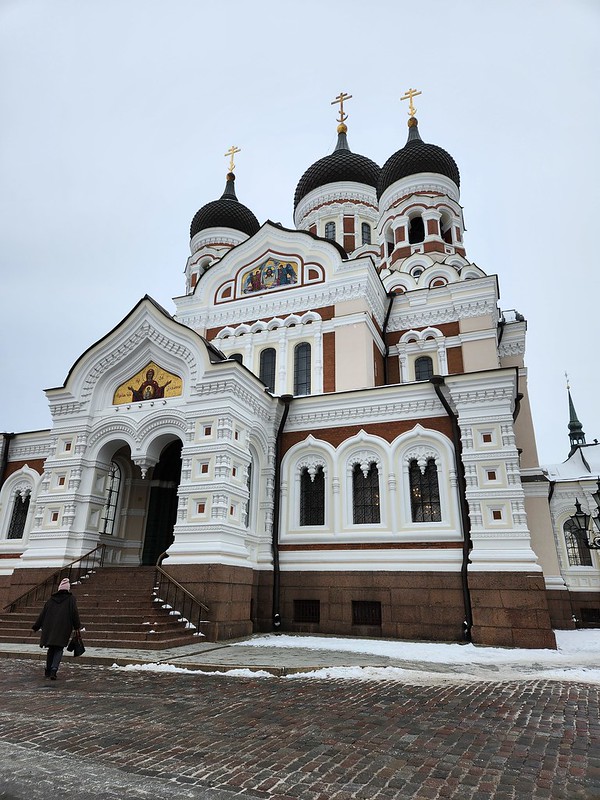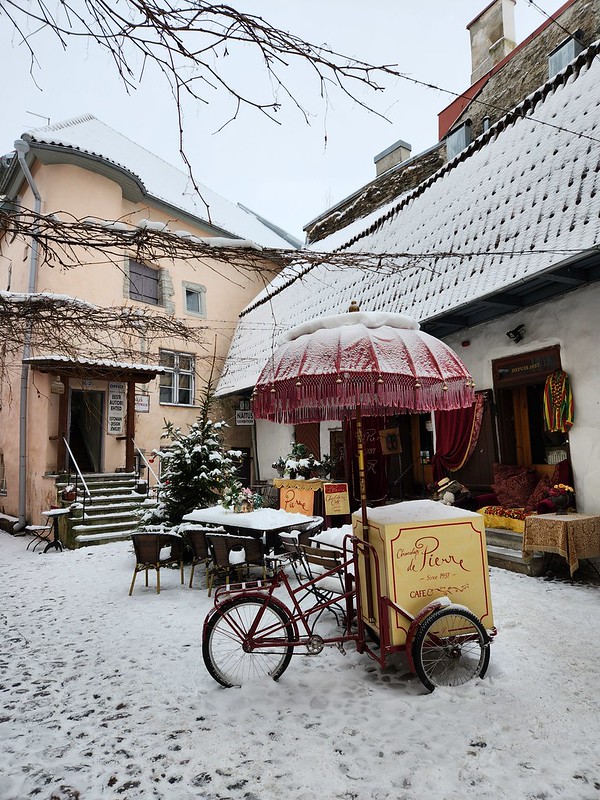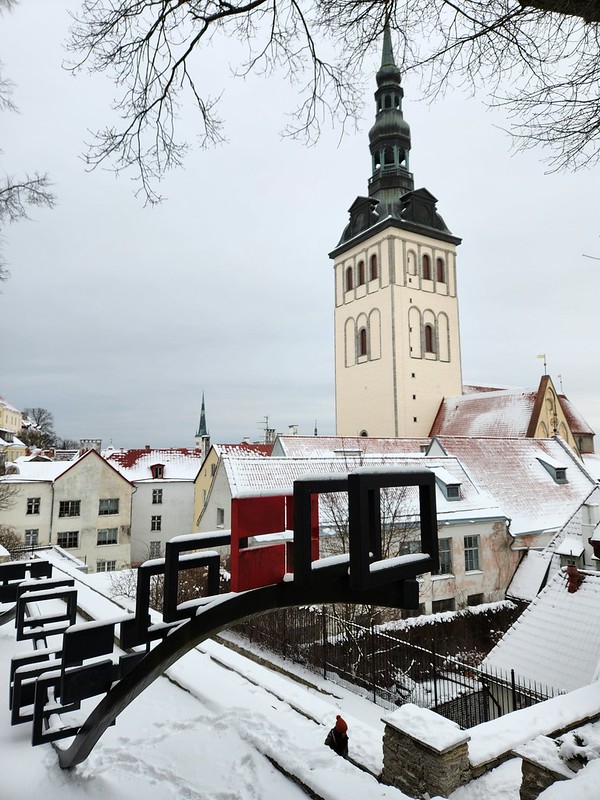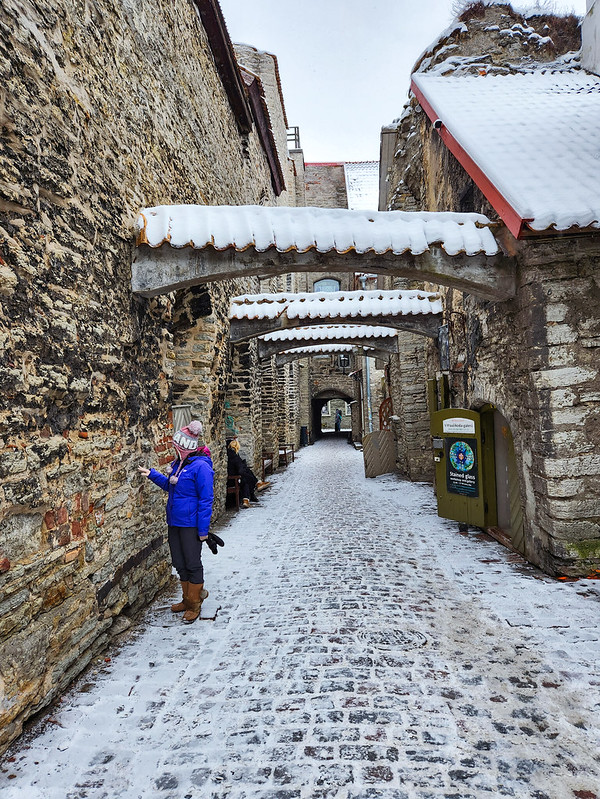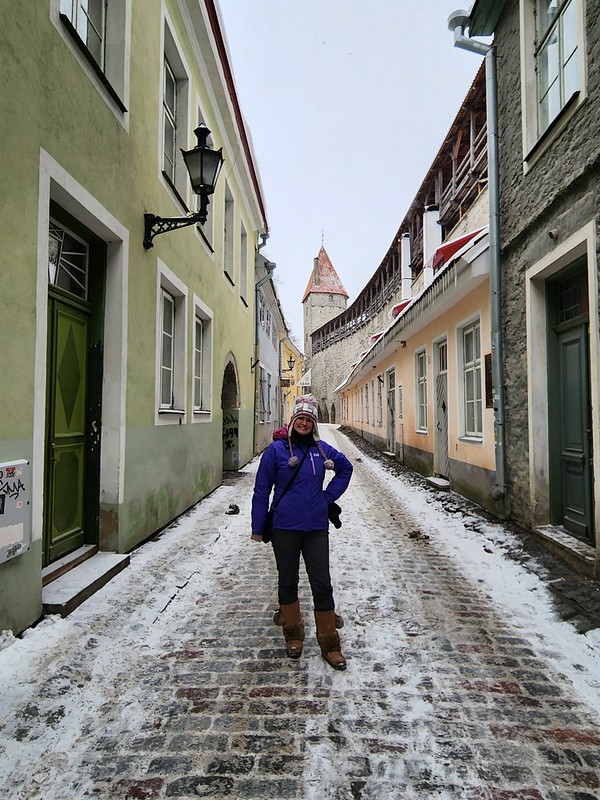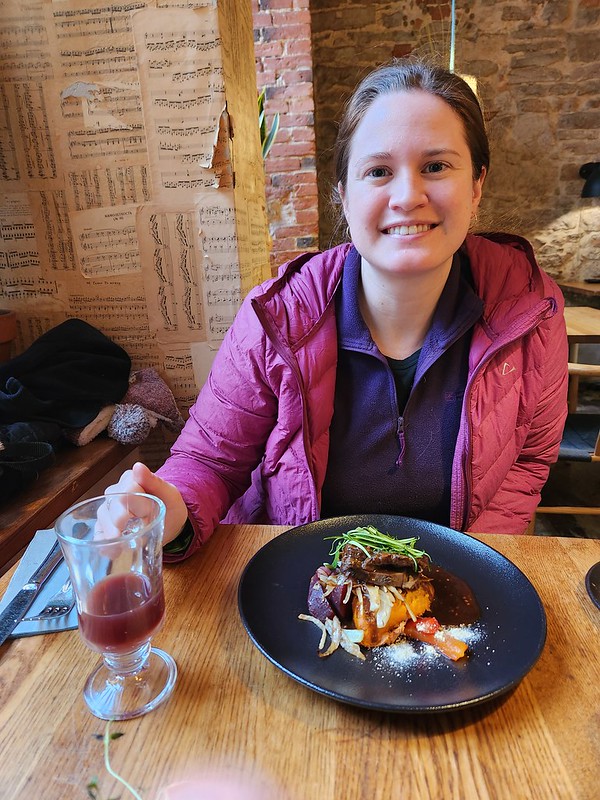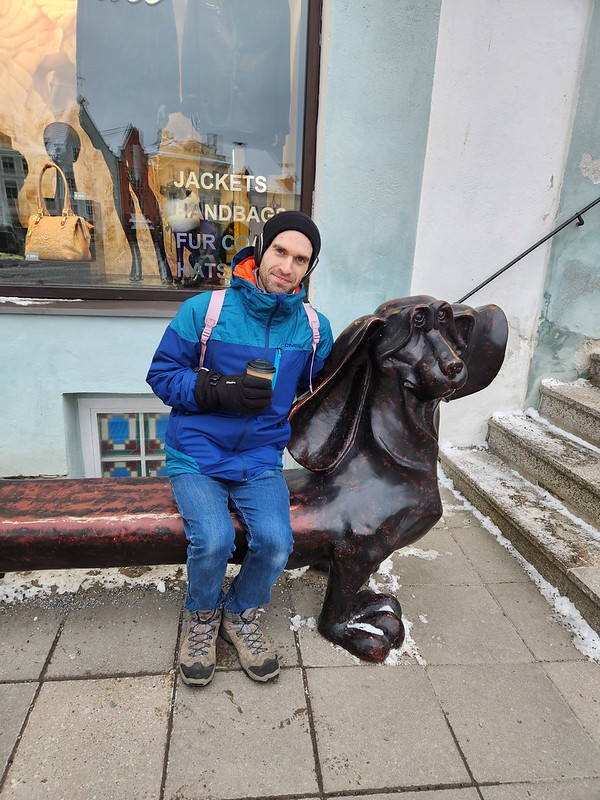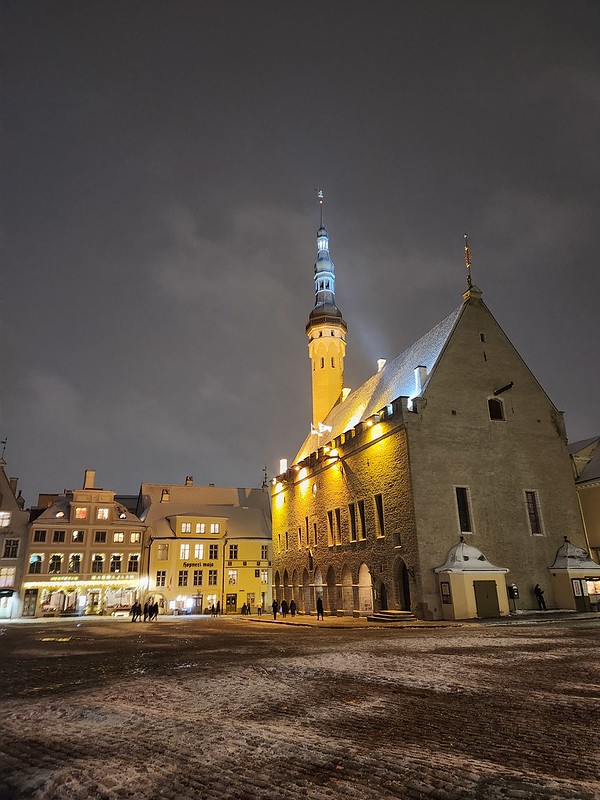Finland was the primary focus of our trip, but Helsinki is so close to Tallinn that we couldn’t resist popping over to Estonia for a day. There’s a ferry that runs direct from city to city and takes just over 2 hours. We did the evening run and arrived in Tallinn around 11pm and took a taxi to our hotel. We had a small crisis before leaving Helsinki. I thought we were staying in a hotel and was checking my email for the address before leaving and found an email detailing instructions on how to get into the apartment (I had assumed there was reception). The instructions said that the code to get in would be texted to us the day before, which is a major flaw because obviously our phones didn’t work in Europe. I frantically emailed them for the code, but fortunately Katie was able to call them on her phone and get it for us. We’re just relieved we made this discovery in Katie’s apartment and not at the entrance to the hotel, which is not manned and we would have be locked out of without wifi at night!
So crisis averted and fortunately, the apartment was lovely! All our hotel bookings in Finland were very expensive, but Tallinn was cheap and the location was unbelievable! Tallinn is centered around the Old Town, but there’s not much actually in Old Town for accommodations. Our hotel was right on the edge of Old Town and was a large 1 bedroom apartment with a full kitchen and living room. This was amazing the following day because it was really cold and we loved having the apartment to pop back to every couple of hours to warm up.
We had a nice breakfast at a nearby café and did a bit of exploring around Old Town. We started at the Town Square, which we were right next too, and just meandered around the city. The streets are mostly pedestrian only and very confusing, but Old Town is small enough that you can’t ever really get lost. It’s a really beautiful place though – Old Town is split into two parts, the upper and lower city – and it’s completely encircled with old stone walls, so it really lives up to its name of being “Old”.
We decided it was a good place to learn some real history and we found a free walking tour at 11am. It needs 10 people to run and I was convinced it wouldn’t get enough because it was really not busy, but we ended up with 14! There were a few people traveling around like us, but a bunch of the guests were on a cruise. It seemed like an odd time of year for a cruise (especially considering they were Australian and it’s summer in Australia), but hey, who am I to judge!
The tour was excellent! Our tour guide had grown up in Estonia and was the same age as me. She shared lots of personal anecdotes from her family history that really made the tour come alive. Estonia has a long and storied history, like most of Europe, but here it’s mostly about occupation. Her history lesson dated back to the 1200’s, when Estonia first fell to Danish occupation. Denmark occupied the country for a long time and constructed a lot of early Old Town. Old Town is interesting because the Upper part of the town has a great view, which is actually very unique because Estonia is super flat and the highest point in the country is only 318 metres high.
The story changes in the 1500’s when Estonia submitted to Swedish occupation. From there, the history sounded very similar to what we learned of Finland when we visited Suomenlinna. The Swedes ruled the country until early 1700’s, when they were succeeded by the Russians, same as in Finland. There was a brief period of independence in 1918 following the Russian Revolution that lasted for 22 years, until the Soviet Union invaded again in 1939. This reign lasted until the fall of the Berlin Wall and Estonia re-gained their independence in 1991.
Despite the long Russian rule, there’s limited Russian influence around Old Town. During first independence, the Estonians tried to remove as much of the visible Russian monuments around town, save for the beautiful St. Aleksander Cathedral, which apparently they didn’t have the money to tear down. But our guide felt that throughout time, it’s generally become a beloved part of the Old Town.
Russian influence is still very evident in Estonia today though, with some 40% of the population speaking Russian. It was 1 day to a year from when Russia first invaded Ukraine when we were there, which was a somber reminder of how recent Estonia’s history really is. Our guide explained that though there is a large population of Russian-speaking Estonians, Estonian is the only national language and there is still a lot of animosity between the Russian and Estonian speaking Estonians. Her grandmother actually spent several years in a Siberian labour camp and she indicted that her father’s generation are still very opposed to the Russian speaking Estonians and don’t mix with them, even though most Estonian-speaking Estonians of that generation are also fluent in Russian. In contrast, she felt her generation wasn’t so caught up in segregation, but still didn’t mix with one another because these days, neither can speak the other’s language, so it’s too hard to communicate.
We spent most of the tour in the Upper city, which has less tourist amenities and more history. We visited two lookouts, which provide a great view down on to the Lower part of the city and the more modern parts of Tallinn. We didn’t explore much of Tallinn beyond Old Town because we only had 1 day, but we did walk outside of Old Town to the “hipster district” (so named by our guide, we don’t know how legitimate this label is).
But before leaving Old Town, we treated ourselves to my favourite meal of the entire trip! Our guide recommended a small restaurant called Rataskaevu 16 and it was so delicious! We started with mulled wine and homemade rye bread for an appy and then I had an elk steak and Seth had a wild mushroom risotto. Then we finished off with an Estonian cheese platter for dessert. I’m not a big foodie, but it was heavenly! Although I was sad to learn after the fact that what the Scandinavians call “elk” is what we call “moose”, which was a little less exciting have grown up in Newfoundland. Seth also informed me that caribou and reindeer are also basically the same, the name just depends on what part of the world you’re in.
The “Hipster District” isn’t too far from Old Town, so we walked over to the Balti Jaama Turg, which is a giant indoor market with tons of food options and clothing stalls. We found some snacks and spent an hour browsing through the stalls. One thing I noticed in Helsinki, and subsequently in Tallinn, is that there is a lot of quality thrift options. I was sorely tempted by a floor length puffy jacket while thrifting, but figured it would have limited use in wet Vancouver, so I let it lie.
If you continue a little further, you get into more of an industrial area filled with lots of beautiful murals. There’s a collective of artists working in most of the spaces and we did some exploring before taking a break for a beer at one of the breweries. The dark caught up with us after that and we decided to return to Old Town for dinner – it was a nice meal, but compared to our amazing lunch it was a bit forgettable.
